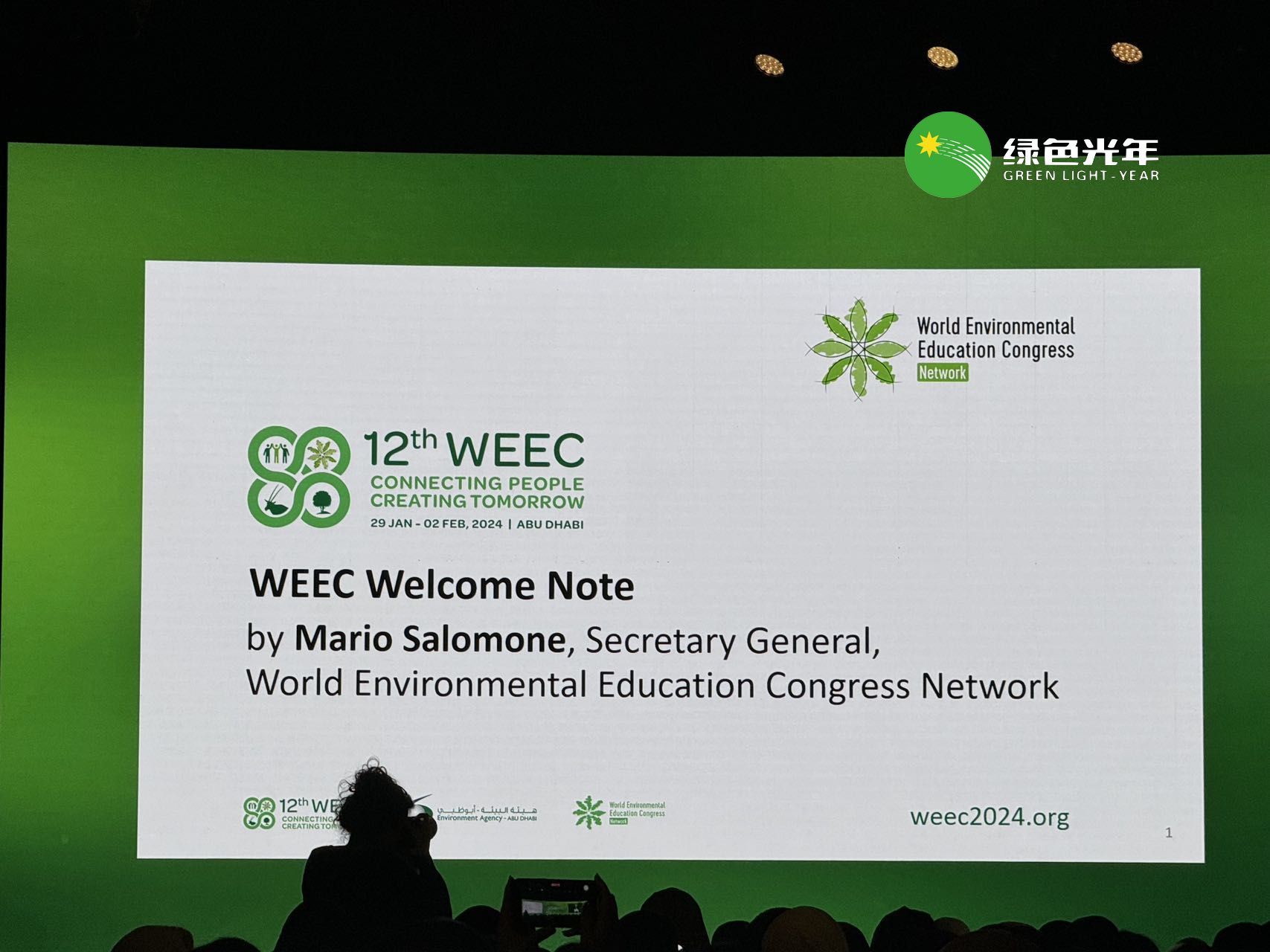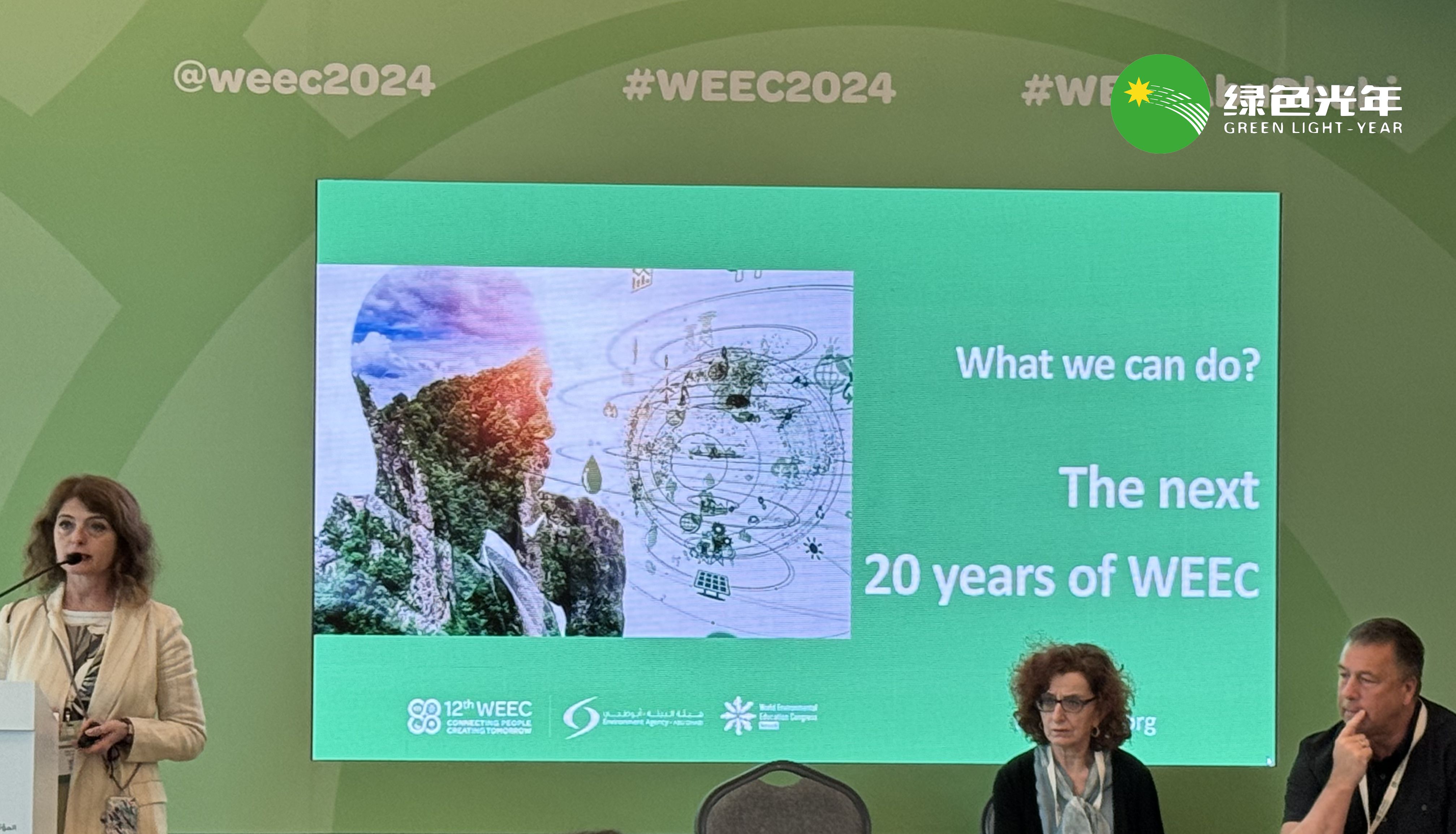Today at the WEEC conference, the focus of the discussion was fortuitously on how to get as many people around the world as possible to value and learn about Education for Sustainable Development (ESD). In fact, even before the conference started, many had realized that there is a global deficit in education on sustainable development. As mentioned by Miriam Vilela, the Executive Director of Earth Charter International, in the plenary session at 9 a.m. today, UNESCO has been advancing the ESD agenda since 2005, following its initial mention in 2004. The ESD action plan framework, developed in conjunction with ministers of education, is already planned through 2030. The focus of the action plan framework is to ensure that more learners can cultivate knowledge, skills, values, and attitudes related to sustainability. Three years ago, UNESCO drafted the report “Reimagining Our Futures Together: A New Vision for Education,” which reiterated the desire and importance of integrating ESD into national educational curricula. The call to strengthen global ESD remains unceasing to this day.
From my perspective, this request still appears challenging to fulfill. Below I will briefly explore several key factors:
-
Cultural Differences and Values:
Different countries, influenced by their historical and cultural legacies, possess unique value systems and cultural traditions. Education naturally becomes a means of transmitting these national values. For example, the collective education promoted in the East struggles in the individualistic Western world.
-
Political Factors:
“History is the propaganda of the victors.” – Toynbee
Political systems can fundamentally alter a nation’s education system, depending on the country’s specific conditions. Some nations favor a more diverse and open educational system and environment, while others are more conservative, often using education to reinforce their political ideologies.
-
Inequity in Information and Technology:
Countries have differing educational foundations, leading to difficulties in unifying education without shared information and technology.
-
Economic Disparities:
Nations have varying economic strengths, which inevitably lead to unequal distribution of educational resources. Developed countries often have higher-quality educational resources, facilities, and faculty. Developing countries may face shortages of educational facilities and qualified teachers. In countries where the economy is collapsing or has collapsed, education seems to have become a luxury.
-
Communication Barriers:
Different countries use different languages, and even within a single country, dialects, terminologies, and expressions can vary. This is one of the significant challenges to globalizing education, as language is a fundamental tool for disseminating education.
For these reasons, conferences on the globalization of certain educational aspects continue to be held in abundance and will likely not cease this century.
Yet, people have not given up hope, as evidenced by the audience suggestion at today’s noon conference that we should change the way we solve problems. An appeal was made for a more proactive and radical stance in addressing and solving issues. Other audience members and experts on stage also shared their thoughts and potential solutions to this global challenge.
When this goal will be realized remains unclear. Furthermore, even if a global standardization of ESD is achieved, could it potentially lead to severe, turbulent side effects? This remains another timeless conundrum that, to this day, lacks a definitive answer.



